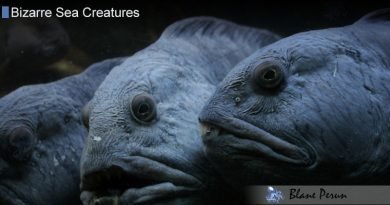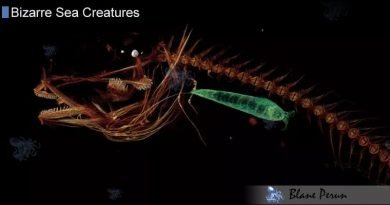Spook Fish
Spook Fish
The Spook Fish (also known as the Barreleye Fish, family Opisthoproctidae) is one of the most fascinating and otherworldly creatures inhabiting the deep ocean. Often called the “ghosts of the sea,” these translucent, slow-moving fish drift through the twilight zone of the ocean—between 400 and 1,500 meters deep—where light barely penetrates. With a transparent head and tubular eyes that can rotate within their fluid-filled dome, the spook fish represents one of nature’s most extraordinary adaptations to life in the abyss. Found throughout the Pacific, Indian, and Atlantic Oceans, they continue to intrigue scientists and ocean explorers alike for their eerie beauty and advanced visual system.
Introduction: The Ghost of the Deep
The ocean’s twilight zone, known as the mesopelagic layer, is home to some of the strangest and most elusive creatures on Earth. Among them, the spook fish stands out not only for its ghost-like appearance but also for its highly specialized vision. With its transparent, dome-shaped head and upward-facing barrel eyes, this deep-sea marvel is perfectly adapted to detect faint glimmers of light from the world above. Like many bizarre sea creatures of the deep, the spook fish has evolved extraordinary physiological traits to survive in an environment where light is scarce, pressure is immense, and food is difficult to find.
Physical Characteristics and Vision
A Transparent Head and Barrel Eyes
Perhaps the most remarkable feature of the spook fish is its completely transparent, fluid-filled head, which allows light to pass through unobstructed. Inside this dome are two barrel-shaped eyes that face upward—an evolutionary adaptation for spotting prey silhouettes against the faint glow filtering down from the surface. These eyes are enclosed in a clear shield, enabling the fish to look both forward and upward by rotating them within their sockets.
The Green Lens Advantage
The spook fish’s eyes contain green-tinted lenses, believed to filter out sunlight and enhance contrast when detecting bioluminescent organisms. This optical feature gives them a visual edge in detecting movement and faint glows from creatures such as jellyfish and small crustaceans. Similar visual adaptations can be observed in other deep-sea organisms like the Crossota norvegica jellyfish, which also relies on light-sensitive adaptations to navigate the dark ocean depths.
Body Design and Movement
Spook fish possess elongated, slender bodies that allow them to move efficiently through dense water. They can vary in form—some are streamlined and aerodynamic, while others are more robust and rounded. Their lack of prominent teeth and their gentle swimming behavior suggest that they are passive predators, relying on stealth and precision rather than speed.
Habitat and Distribution
The spook fish is typically found in tropical to temperate waters of the Pacific, Atlantic, and Indian Oceans, particularly between depths of 400 and 1,500 meters. These regions mark the lower boundaries of light penetration—perfect for their upward-gazing hunting strategy. A unique adaptation known as counterillumination allows them to blend with the dim light above, making them nearly invisible to predators approaching from below. This same technique is observed in other deep-sea organisms such as the sea angel, highlighting nature’s universal drive for survival through mimicry and camouflage.
Feeding and Behavior
Diet and Predation
Spook fish are opportunistic feeders, preying mainly on zooplankton, salps, and small fish. Their large, upward-facing eyes help them detect prey that drifts or swims above them. Some species, like the Pacific Barreleye, have even been observed stealing small fish from the tentacles of siphonophores—gelatinous colonial organisms found in the same depths. Their slow and deliberate movement helps them avoid detection while positioning themselves for precise strikes.
Behavioral Adaptations
Despite their ghostly name, spook fish are not aimless drifters. They actively maneuver in the midwater column, conserving energy by moving slowly and maintaining neutral buoyancy. Their transparent heads and reflective bodies enhance camouflage, allowing them to evade predators such as larger fish or cephalopods. This combination of stealth and sensory precision makes them among the most efficient hunters of the twilight zone.
The Pacific Barreleye: Nature’s Transparent Marvel
The most famous member of the spook fish family is the Pacific Barreleye (Macropinna microstoma). Discovered in North Pacific waters at depths of 400–600 meters, this species stunned scientists when it was first captured on camera. Its completely transparent dome-shaped head allows it to rotate its eyes forward when feeding, granting it an unprecedented range of vision. This unique adaptation enables the Pacific Barreleye to track prey movements and avoid predators with remarkable precision—earning it a reputation as one of the deep sea’s most surreal species.
Ecological Significance
The spook fish plays an important role in maintaining deep-sea ecological balance. As a mid-level predator, it helps regulate populations of zooplankton and small fish, while also serving as prey for larger species like squid and deep-sea sharks. Its adaptation to low-light environments reflects the extraordinary diversity of evolutionary solutions that exist in the deep ocean. Studying such species not only enriches our understanding of marine life but also provides insights into how organisms adapt to extreme environmental pressures and resource scarcity.
Human Impact and Conservation
While human encounters with the spook fish are rare, the deep-sea ecosystems they inhabit are not immune to threats. Deep-sea trawling, plastic pollution, and climate change can alter the delicate balance of these environments. As ocean temperatures and chemistry shift, the habitats of creatures like the spook fish could become less stable. Organizations and researchers are increasingly advocating for the protection of deep-sea habitats through sustainable fishing and pollution reduction initiatives. Preserving such ecosystems ensures that enigmatic species like the spook fish and the Stygiomedusa gigantea can continue to thrive in their otherworldly realm.
Conclusion
The spook fish remains one of the ocean’s most hauntingly beautiful mysteries. Its translucent body, extraordinary eyes, and ability to vanish into the twilight depths epitomize the ingenuity of evolution in extreme environments. As technology advances and exploration dives deeper into the abyss, each glimpse of this elusive creature reminds us how little we truly know about the vast and vibrant ecosystems hidden beneath the waves. Protecting these realms is not only vital for preserving biodiversity—it’s essential for continuing to uncover the countless wonders that define our planet’s greatest frontier.




